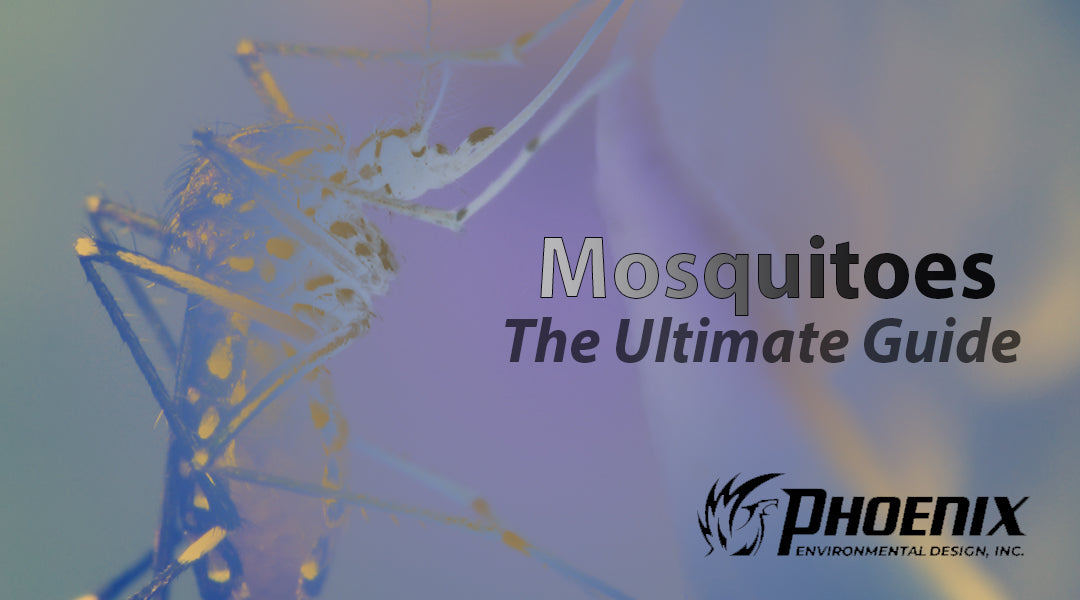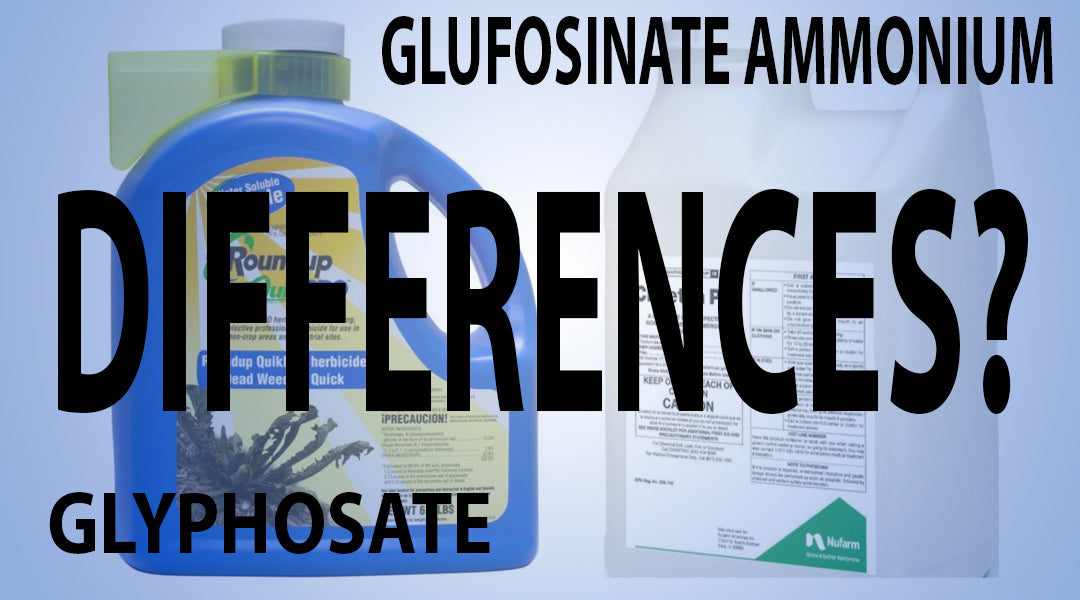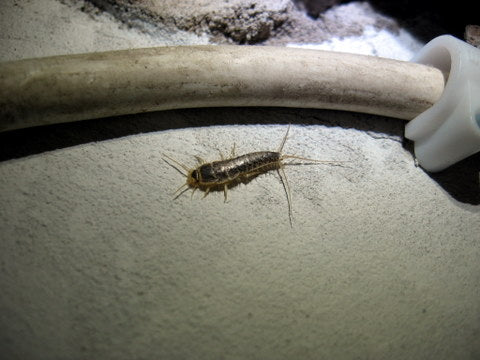Plant growers always look for new ways to control their pest problems as insects continually invade crops and greenhouses. Thankfully, Syngenta produces different Beneficial Insect and Predatory Mite species for use in integrated crop management. ICM, a highly effective practice for growers across the globe, uses biological control agents in conjunction with or as an alternative to pesticides.

It's wise to protect greenhouse crops from pests. (Image by Joi Ito CC BY 2.0)
Considering ICM in the Greenhouse
Greenhouses and grow rooms with their lush plant life, provide the ideal environment for pest insects to live and breed. The heat and humidity create the perfect condition for pests to multiply rapidly, which leads to routine spraying to eradicate the pests before they can do any damage. However, regular spraying can lead to the development of various pest-resistant strains that remain unaffected by the active ingredients.
Bioline produces beneficial insects that work well with chemicals in an ICM program, which also takes into consideration chemical choice, usage and the growing system. Before introducing beneficial insects to the greenhouse, growers should plan ahead. They need to consider and understand the greenhouse pests, diseases, growing systems, rotations and any problems that could arise. Learning all there is to know about the pest and the problem will result in greater pest control effectiveness in the greenhouse.
Transitioning to an ICM Program
Growers often find it difficult to transition to an ICM program; however, it's an easy path to take when it's approached logically. The first step to creating a successful ICM program is to think about the greenhouse growing system and the pests or diseases based on previous growing seasons. Next, treat the problem with natural enemies of consistent quality. Growers have to take numerous parameters into account before introducing beneficial insects into the greenhouse, such as:
- Disease and pest insect risks
- Plant life surrounding the crops
- Chemical controls available
- Plants that arrive with pests and diseases
- Chemicals used within three or four months
Paying careful attention to detail helps growers create a successful ICM program and produce quality crops.

Aphids on a plant. (Image by Andreas Eichler CC BY-SA 3.0)
Greenhouse Pests and Aphid Control
Aphids work quickly to destroy entire greenhouse crops. These small, soft-bodied insects range in size from 1 to 4 millimeters in length and feed on plant sap. They form clusters around the terminal shoots or under the leaves, feeding on the foliage and weakening the plant. Aphids can wreak havoc in greenhouses and become more difficult to eliminate without taking drastic measures.
Identifying Aphids
An aphid has two antennae that function as sense organs. It also has two cornicles that rise from its body near the rear end, including a cauda that resembles a tail. Aphids range in color from green to black, and some species produce a waxy substance that coats their bodies, creating a grayish or whitish appearance.
Aphids specialize in sap feeding as they have tubular mouthparts that penetrate the foliage and suck out the food source. They attack all parts of the plant, such as the leaves, the stems and the roots. Although the sap contains sugars, it lacks other nutrients that the aphids need. Therefore, they excrete the excess sugar from their bodies, leaving it behind on the plants in the form of droplets called honeydew.
An aphid colony grows very quickly, covering the foliage and killing the plants. Large colonies can distort the leaves, and the excess honeydew encourages sooty mold growth, which further damages the plants. Aphids also transmit plant viruses throughout the greenhouse, affecting the entire crop and causing even more problems.
Attacking Aphids With Aphidius colemani
Aphidius colemani (Aphiline c.) females seek out and parasitize aphids. Their primary target and most frequent host is Aphis gossypii, known also as the melon or cotton aphid. Aphiline c. also controls the peach-potato aphid as well as other less-documented aphid species.
Once a female A. colemani finds a single aphid or an aphid colony, she palpates the aphids with her antennae. If they have not been parasitized, the female curls her abdomen under her body and penetrates the aphid with her ovipositor. In less than a second, the female can identify the aphid, check its condition and insert an egg into its body. Once the egg hatches, the larva begins to feed on the aphid from the inside. The initial feeding doesn't kill the aphid; however, the pest soon dies once the larva begins feeding on its vital organs.
When the larva matures, it cuts a slit in the aphid's hollow shell and attaches the carcass to the surface of the plant with silk. As the larva spins more silk within its host, the carcass develops a golden hue, forming the characteristic "aphid mummy." The larva then pupates for up to five days and emerges as an adult from a circular opening on the back of the carcass. The adult A. colemani takes off in search of new hosts to continue the cycle.
Releasing A. colemani in the Crops
Growers can introduce A. colemani at low rates, releasing it weekly during a period when the aphids are likely to arrive on the crops in spring or early summer. A. colemani females locate and parasitize the first aphids to arrive in the crops, helping to prevent the colony from developing. If the females do not stop colony development, they slow the colony's growth, giving growers more time to locate an infestation and take further action.
If a colony has already developed in an area, growers can use A. colemani and other parasites at higher rates. Releasing the parasites next to the colony helps them to locate the aphids more quickly and start working to eradicate the problem. In areas where growers have not released parasites, an aphid colony can grow up to 20 times its size in one week. Once a colony reaches this size, releasing A. colemani will not have an immediate effect. In fact, it can take several generations to achieve control, and growers may need to use alternative methods to reduce aphid numbers.
Other Aphid Parasitoids
Aphidius ervi
Aphidius ervi (Aphiline e.) females parasitize aphids species known as Macrosiphum euphorbiae and Aulacorthum solani. The A. ervi has a longer life cycle than the A. colemani does, and it grows larger in size and selects larger host species. For comparison, A. colemani parasitoids reach adulthood within 14 days at 70 degrees Fahrenheit while A. ervi takes 19 days to reach adulthood at the same temperature. The duration of the cycle is 20 days for A. colemani and 29 days for A. ervi at 59 degrees F.
Aphidius aphidimyza
Aphidoletes aphidimyza (Aphidoline a.) adults belong to the same group as fungus gnats and use aphid colonies to their advantage. The adults are active mostly at night and do not prey on the aphids. Instead, they lay their eggs in the aphid colony; the larvae then hatch and feed on the pests. A. aphidimyza larvae feed on more than 60 different aphid species and provide effective control in the greenhouse.
Adult A. aphidimyza feed on aphid honeydew, which extends the adults' lives and increases the females' egg count. In large aphid colonies, the adult A. aphidimyza females lay more eggs, resulting in more larvae that feed on and control the population. The females can lay as many as 250 eggs or more in dense aphid colonies. Once the eggs hatch, the larvae bite and inject a toxin into the aphids' legs. This toxin paralyzes the aphids, providing an easy way for the larvae to drain the contents from the pests. An individual larva can reach maturity by feeding on only five adult aphids.
In the fall, the A. aphidimyza pupae enter diapause, which reduces their use as a predator in crops. Attempting to create low-light situations still may not work to keep the pupae from entering diapause. When treating an infestation with A. aphidimyza, apply at least 10 for every 10 square feet in and around the aphid colony. Growers can also apply lower rates more widely in the crop; however, higher release rates will provide greater control and significantly reduce aphid numbers.

A close-up image of Amblyseius swirskii, a predatory mite.
Discovering Spider Mites
Spider mites belong to the same group as ticks, but they don't feed on humans or animals. Instead, spider mites feed on plants and cause widespread devastation in fields and greenhouses. Red and two-spotted spider mites use their mouthparts to puncture the plants' cells and drain the contents, producing a yellow speckling on the leaves.
Spider mites produce silk webbing, which is visible at higher infestation levels. The mites also hang from the tips of the leaves, creating a mass of reddish-brown mites as they attack the plant. Spider mites often cling to a worker's clothing and get transferred to other parts of the crop. Mites enter diapause in the fall and seek hiding places in greenhouses or on agricultural equipment. In the spring, the mites emerge from their overwintering state and reinfest the crop.
Controlling Spider Mites
Phytoseiulus persimilis
Phytoseiulus persimilis (Phytoline p.) is a predatory mite that feeds on plant-sucking spider mites in the Tetranychidae family, such as the two-spotted spider mite and the carmine mite. The female P. persimilis lays her eggs among the spider mite colony, which hatch to reveal six-legged larvae. The larvae do not feed on the spider mites until they reach the protonymphal and deutonymphal stages. During these two stages, the predatory mites feed on all stages of the spider mites. However, they have shown a preference for the eggs.
The predatory mites move easily among the spider mites' webs and can spot leaf damage from a distance. Releasing the predatory mites soon after the first spider mites appear produces the best results, such as during the spring when the mites become active. In protected crops, spider mites usually enter diapause in September and become active in January. Release the predator mites at this time to prevent the spider mites from increasing in numbers. In heated crops, spider mites may remain active all year. Therefore, predatory mites can help curb their numbers and prevent spider mite infestations.
Amblyseius andersoni
Amblyseius andersoni (Anderline aa) is another predatory mite that controls a variety of spider mite species. It remains active at lower temperatures and can be applied in the crops much earlier in the growing season. Though A. andersoni may not feed as much per day as other predatory mites do, releasing them in large numbers can help deter spider mite establishment.
Anderline aa works well in conjunction with Phytoline p. As Phytoline p. works to eradicate spider mite colonies, A. andersoni travels through the plant and attacks the spider mites one by one. The two predatory mites don't interfere with each other but cause a host of problems for spider mites. A. andersoni starts slowly at first but becomes more active over the course of several weeks.
Amblyseius cucumeris
Amblyseius cucumeris (Amblyline cu) is a predatory mite that works well to eradicate thrips and spider mites. Amblyline cu is a breeding sachet and hangs freely from hanging baskets and sturdy garden plants. It contains Amblyseius cucumeris, releasing thousands from the breeding sachet over several weeks.
Amblyseius californicus
Amblyseius californicus (Amblyline cal) is another predatory mite that feeds on the two-spotted spider mite and the carmine mite. Though it prefers to feed on spider mites, it also feeds on other arthropods and pollen. Because it has a varied diet, this predatory mite can persist in crops long after the spider mites have died off or entered diapause. When the spider mites become active again, the predators are still present and begin feeding on the mites, preventing any infestation from taking hold. Amblyseius californicus works well with P. persimilis to eradicate single spider mites and entire colonies.

A whitefly on a leaf. (Image by Amada44 CC BY-SA 4.0)
Revealing the Whitefly Threat
The whitefly causes numerous problems in greenhouses and outdoor crops. The two common whiteflies, Trialeurodes vaporariorum (greenhouse whitefly) and Bemisia tabaci (sweet potato whitefly), look similar but are easily identified by their wings. The greenhouse whitefly hides its body by holding its wings in a tentlike fashion. The sweet potato whitefly keeps its wings alongside its body, revealing its yellowish coloring. When looking at the whiteflies against the leaves, the greenhouse whitefly appears triangular against the surface while the sweet potato whitefly appears more elliptical.
Whitefly adults settle on young foliage and lay their eggs near the growing point of the plant. At first, the eggs appear creamy in color but turn black within 24 hours. The larvae hatch from the eggs and crawl along the plant's surface before settling. As they develop into other larval stages, the young larvae can no longer move.
The larvae feed on the sap within the leaves, extracting proteins and nutrients to grow; they excrete excess sugars in the form of honeydew. In high populations, the honeydew creates a sticky mess on the leaves and promotes sooty mold growth, which restricts photosynthesis and weakens the plant.
Controlling Whitefly Infestations
Eretmocerus eremicus
Eretmocerus eremicus (Eretline e.) is a parasitoid of both greenhouse and sweet potato whiteflies. Once it finds a suitable host, the female E. eremicus palpates the whitefly with her antennae and checks to see whether or not it has already been parasitized. If not, the female lays an egg between the whitefly and the leaf's surface. Females typically select second-instar host larvae for parasitism but will also lay eggs beneath other instar larvae.
The larva hatches from the egg and burrows into the whitefly host, forming a capsule around it. Whiteflies that have been parasitized by E. eremicus don't develop a black color, which is a normal characteristic of Encarsia parasitism. Therefore, it's much harder to detect them within the crop. As the pupae mature, they form a darker yellow or orange coloring, making them easily identifiable with the naked eye.
E. eremicus adapts well to high temperatures and works well for preventative maintenance to control whiteflies. Though high-release rates may reduce whitefly populations, it comes at a high cost. Therefore, using a compatible insecticide may work best to reduce whitefly numbers.
Encarsia formosa
Encarsia formosa (Encarline f.) targets greenhouse whiteflies and works as preventative maintenance to minimize whitefly infestations. If whiteflies have established in great numbers, it may be more helpful to use a compatible chemical to reduce the population. Though E. formosa can decrease whitefly populations, it's not a cost-effective solution because of the higher rates needed to gain control.
This parasitic wasp moves through the greenhouse in search of whitefly larvae. Once she finds a host, she examines it and determines whether or not it's the correct whitefly according to her needs. If it is a suitable host, she will insert an egg into the larva. When the egg hatches, the parasitic larva will consume the whitefly from within and continue to feed until it has killed its host. It takes about eight days for the wasp to mature and break free from its host, venturing out to repeat the process.
Most E. formosa females kill more whiteflies than they parasitize. The females prefer to lay their eggs in third- and fourth-instar larvae, so if they encounter a smaller larva, they will normally attack it and feed on its bodily fluids. Feeding increases the females' lifespan and the number of eggs that they can lay.
Amblyseius swirskii
Amblyseius swirskii (Swirskiline as) is a predatory mite that reduces whitefly populations and improves the quality of crops that are grown in warmer conditions. If growers release A. swirskii early in the season, the mites may prevent whitefly infestations altogether. These predatory mites establish quickly in the crop and feed on pollen when they have no other living food source available.

Thrips larva on a leaf. (Image by M.J. CC BY-SA 2.0)
Learning About Thrips
Adult thrips have delicate wings and move easily through dense crops. Western flower thrips feed on pollen and developing petals, damaging the flowers and causing blemishes. The females lay their eggs in the leaf tissue or on developing fruit. The larvae, which have an orange coloring, are small and go through two feeding stages before falling to the ground.
The larvae form into nonfeeding prepupae in the top layers of the soil before turning into pupae. However, some pupation may also occur on the foliage. While in the soil, the pupae are vulnerable to predatory mites and nematodes.
Western flower thrips not only damage foliage but also transmit plant diseases such as tomato spotted wilt virus and impatiens necrotic spot virus, both of which affect numerous ornamental crops. First-instar larvae obtain these viruses by feeding on infected plant tissue. Once they mature into adults, they transmit the viruses to uninfected plants, spreading the disease from plant to plant in the greenhouse.
Controlling Thrips With Predatory Insects
Amblyseius swirskii
Amblyseius swirskii, a voracious predatory mite, preys on thrips, whiteflies and other greenhouse pests. In areas without prey, it feeds on pollen and mold, extending its life and providing preventative control. Though A. swirskii prefers warm, humid areas, it moves closer to the ground during the winter, which helps it to survive in semiprotected crops.
Amblyseius cucumeris
This predatory mite feeds on thrips and many different arthropods. It not only prevents western flower thrips from destroying greenhouse crops but also reduces rust mite and other spider mite populations. Because of its small size, A. cucumeris feeds on the smallest thrips larvae in the crop. Therefore, introduce as many predatory mites as possible to prevent thrips larvae from growing and reaching adulthood.
Orius insidiosus
Orius insidiosus is a predatory bug that works well with Amblyline cu in crops to target both young and adult thrips. While Amblyline cu controls immature thrips, Orius insidiosus feeds on the adults, providing total control in the greenhouse.
Orius predators attack small arthropods at all mobile stages; they also feed on pollen in the absence of prey. The females lay their eggs in the plant tissue, leaving a small cap visible just above the surface. The eggs hatch after five days at 68 degrees Fahrenheit, producing small, orange nymphs that resemble thrips larvae.
Young O. insidiosus go through five larval stages, developing from an egg into an adult in about 25 days. However, the overall quality and availability of food sources have an impact on their development time. Orius feeds on its prey by inserting its proboscis into the host and sucking out the body contents. It may even abandon a partially consumed victim if it locates another one in the vicinity. In fact, these predatory bugs kill more thrips than they need to in order to reach full maturity.

A dark-winged fungus gnat. (Image by John Tann CC BY 2.0)
Discovering Fungus Gnats and Shore flies
Several species of fungus gnats exist in the world, but Bradysia paupera seems to cause the most problems. In the greenhouse, these adult fungus gnats hover in small clouds above plants and in wet areas. They also aggregate in areas where shore flies thrive. In the past, growers thought fungus gnats were just a nuisance pest that didn't cause significant damage. However, researchers have learned that fungus gnats are responsible for the spread of many fungal diseases.
The adult fungus gnat lays her eggs in moist soil or organic matter. The larvae, which have a translucent appearance and a black head, have no legs and measure less than a centimeter in length. They feed on fungi and decaying plants but also thrive on live plant roots and burrow deep into the stems.
Shore flies are found in wet areas where algae is common. The adults have thick, black bodies with short antennae and a breathing horn near the rear end. Fungus gnats have slender bodies and appear more fragile than shore flies do. In addition, shore fly larvae do not have black heads and remain mostly around wet places with plenty of algae.
Controlling Fungus Gnats and Shore flies
Hypoaspis miles
Hypoaspis miles (Hypoline m.) is a predatory mite that feeds on a variety of soil organisms. It has a pale brown color and measures nearly 1 millimeter in length. It lives in the uppermost areas of the soil and is often found moving over the surfaces of planters. The females lay numerous eggs among the soil; these eggs hatch at 68 degrees after six days. The six-legged larvae emerge and go through two stages: protonymphal and deutonymphal. They feed for nearly 10 days before reaching adulthood; afterward, they eat various organisms such as fungus gnats and western flower thrips.
Atheta coriaria
A. Coriaria (Staphyline c.), a predatory beetle, feeds on many different soil-dwelling larvae but prefers shore fly larvae and eggs. The adults measure up to 4 millimeters in length and have a brown or black coloring; the larvae have thin bodies with a pale or yellowish-white appearance. The larvae also transition to a darker color in the later stages. It only takes A. coriaria 21 days to develop from an egg into an adult depending on the temperature and available food sources.
These predatory beetles tolerate various ranges in temperature, humidity, light and other conditions, making them an ideal control method for year-round use in greenhouses. All larval instars are mobile and seek out food within the crop. They kill and feed on all developing stages of shore flies, thrips and other pest insects; however, they prefer smaller to medium-sized larvae and can consume up to 155 eggs in a day.
For commercial use, the beetles perform best in temperatures above 54 degrees. At 70 degrees, a female can lay up to 190 eggs. At 77 degrees, the beetle population doubles in size in only 5.3 days, making A. coriaria an effective and quick-to-establish predator.
Steinernema feltiae
Steinernema feltiae (Exhibitline sf), a predatory nematode, seeks out its prey by swimming in the thin film of water on the soil. It locates its host by detecting waste products and carbon dioxide. Once it finds a host, it enters the body through the mouth, anus or other opening and releases the bacterium Xenorhabdus, killing the pest in a matter of hours.
The nematode grows and reproduces within the host body, creating another generation of infective juveniles to leave the carcass and find fresh hosts to invade. Because infected hosts turn brown and soft, it's often difficult to find them in the soil. Nematodes remain active in temperatures as low as 46 degrees, but the bacteria that they use to kill the hosts require temperatures at least 57 degrees or above. The bacteria fails at temperatures above 79 degrees, and using the nematodes in areas with high ambient temperatures results in failed pest elimination.






Leave a comment (all fields required)